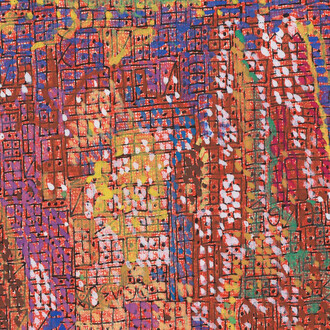The focus of Apostolos Ntelakos’ work for long time has been the tension between the concepts “applied” and “fine” arts.
In his presentation, Ntelakos observes and comments through a sculptural installation the ambiguous manner through which the visual vocabulary of the artistic avant-gardes of the early 20th century (especially that of constructivism) was diffused in the everyday life of the interbellum through the objects of the Art Deco movement.
The transition from the level of ideals to that of the “real-world life” that these vanguards have so strongly envisioned meant, besides the democratization of their ideas, the transformation of these very ideas into aestheticized consumer products.
Ntelakos’ presentation consists of a double artist's book along with a set of ceramic sculptures in varying sizes that trace the contradictions of this historical trajectory.
On the first part of the artist’s book, Ntelakos collects, classifies and presents a large amount of images of Art Deco ceramic animals that he has collected after thorough online research. On the second part of the book, he constructs through the techniques of experimental writing, a narrative that combines historical accuracy with the discourse of fiction.
Regarding the sculptural part of the exhibition, the artist by assuming the role of the “animalier” (that is, the sculptor who historically worked exclusively with the representation of animals), presents a series of seemingly decorative porcelain sculptures executed in the graceful and frivolous vocabulary of Art Deco. These sculptural pieces are imprinted, penetrated or thoroughly cut by constructivist manipulations. With this almost literal morphological manner, Ntelakos demonstrates how the geometric language of the avant-garde of the early 20th century has been incorporated within the design of everyday life objects.
This passage, however, did not happen exactly as smoothly as the idealistic and theoretically inaccessible early 20th century artistic avant-gardes imagined it. The avant-gardes envisioned an elevation of the everyday object to the level of art accompanied by the simultaneous moral uplifting of the individual. The Art Deco did shamelessly the opposite; it uses the vanguard geometric language to reintroduce the decorative and frivolous. On the other hand though, it succeeded in making the language of abstract art accessible to the general public by proposing economically advantageous mass production as a way to access high art. The ambivalence of this particular historical development characterizes the whole artistic endeavor.














